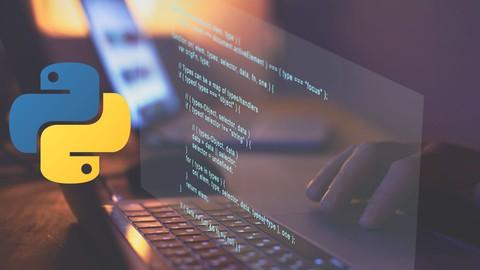Last Updated on April 4, 2024 by GeeksGod
Course : Python for Data Science with Assignments
Are you ready to embark on an exciting journey into the world of Python programming? This comprehensive course is designed to take you from a Python novice to a proficient programmer, equipping you with the skills to tackle real-world projects, automate tasks, perform data analysis, and excel in coding interviews.
In this course, you’ll explore the following key topics through practical hands-on exercises and real-world examples:
– Discover real-world use cases of Python and understand its versatility in various domains.
– Learn how to install Python on both Mac and Windows operating systems to kickstart your programming journey.
– Grasp the fundamentals of Python programming, starting with variables and their scope.
– Dive into data types and type casting to effectively manage different kinds of data.
– Gain insight into essential Python operators to perform various operations with ease.
– Explore essential data structures like lists, tuples, sets, and dictionaries for efficient data manipulation.
– Learn about stacks and queues and their applications in solving real-world problems.
– Understand the space and time complexity of algorithms and their impact on code performance.
– Study sorting and searching algorithms to efficiently organize and retrieve data.
– Master the concept of parameters and arguments to write flexible and reusable functions.
– Uncover the power of Python modules and their significance in building modular applications.
– Utilize filter, map, and zip functions for streamlined data processing.
– Harness the flexibility of lambda functions to write concise and efficient code.
– Master list, set, and dictionary comprehensions for elegant data manipulation.
– Perform data analysis using analytical and aggregate functions to gain valuable insights.
– Handle strings and discover important string functions for text manipulation.
– Learn string formatting and user input techniques for interactive programming.
– Gain proficiency in working with meta characters and implementing regular expressions.
– Unlock the potential of built-in functions for regular expressions, and handle special characters and sets.
– Implement conditional statements for decision-making in your code.
– Iterate over elements using for loops and while loops to process data efficiently.
– Control loop flow with break and continue statements for better program control.
– Combine conditional statements and loops effectively to tackle complex problems.
– Grasp the fundamentals of object-oriented programming (OOPs) and its role in building robust applications.
– Understand inheritance, encapsulation, and polymorphism, and leverage them to write efficient code.
– Explore the Date and Time class for working with dates and times effectively.
– Utilize the TimeDelta class for precise time manipulation in your Python programs.
– Delve into the world of data-driven insights and discover how statistics plays a pivotal role in shaping our understanding of information.
– Equip yourself with the essential Python skills required for effective data manipulation and visualization.
– Learn to categorize data, setting the stage for meaningful analysis.
– Discover how to summarize data with measures like mean, median, and mode.
– Explore the variability in data using concepts like range, variance, and standard deviation.
– Understand relationships between variables with correlation and covariance.
– Grasp the shape and distribution of data using techniques like quartiles and percentiles.
– Learn to standardize data and calculate z-scores.
– Dive into probability theory and its practical applications.
– Lay the foundation for probability calculations with set theory.
– Explore the probability of events under certain conditions.
– Uncover the power of Bayesian probability in real-world scenarios.
– Solve complex counting problems with ease.
– Understand the concept of random variables and their role in probability.
– Explore various probability distributions and their applications.
Join us on this enriching journey, and let’s unlock the power of Python together! Whether you’re an absolute beginner or looking to expand your programming skills, this course provides you with a solid foundation and practical expertise to succeed in your Python endeavors. Enroll now and start your Python programming adventure!














